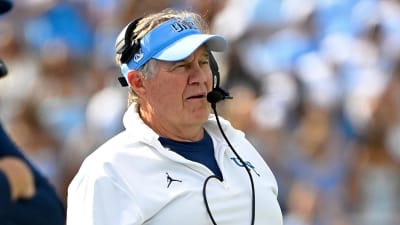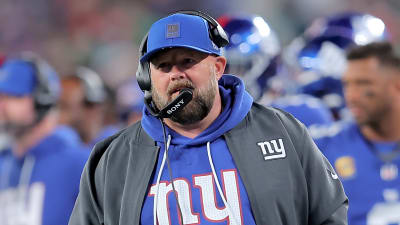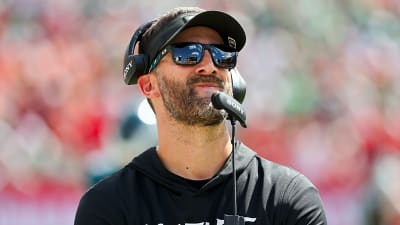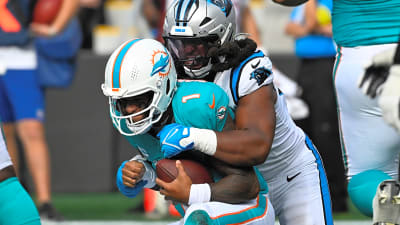
Penn State returns home to Beaver Stadium on Saturday, October 11, for a matchup that coincides with both homecoming and the annual stripe-out tradition. The Nittany Lions enter Week 7 with a 3-2 record, including two early Big Ten losses that have raised the urgency level inside the building. Northwestern arrives with the same mark and a reputation for physical defense and balanced, mistake-free football. The Penn State Offense enters this matchup under heavy scrutiny, needing rhythm and confidence to reestablish control of its season.
Franklin’s Call for Urgency
James Franklin addressed the state of his team earlier this week, making clear the results have not matched the standard. “Obviously disappointed with the result of last week’s game. Did not live up to our expectations or standards,” Franklin said during his press conference. He added that while his players continue to compete, execution remains the missing piece. “This is a resilient group. There are no signs of quit on tape. Our guys battled and played really hard. We didn’t always play smart, but we battled.”
While Franklin defended the team’s resilience, the film shows a troubling pattern. Penn State has battled late in games, but the lack of urgency at kickoff has been glaring. Slow starts and stalled early drives have left the Nittany Lions reacting instead of dictating.
Franklin also emphasized the offensive front as a major concern. “We have not dominated the line of scrimmage the way I think we’re capable of dominating the line of scrimmage and not playing as fast and as aggressive as I think we anticipated,” he said. That sets the framework for Saturday. Penn State’s offense has to seize control of the trenches and establish rhythm before Northwestern can settle in.
Northwestern Defense Provides the Test
Northwestern’s defense has shown more strength against the pass than the run. The secondary has limited opponents to under 180 passing yards per game, keeping big plays to a minimum. Against the run, however, the Wildcats have yielded over 160 yards per outing, a number that continues to test their depth up front.
The statistics only tell part of the story. Against Oregon, Northwestern allowed one 66-yard rushing touchdown in the third quarter but otherwise held the Ducks to just 110 yards on the ground. That ability to bottle up an explosive rushing attack highlights why Penn State must stay balanced rather than leaning too heavily on one dimension.
Defensive coordinator Tim McGarigle rotates coverages to confuse quarterbacks and shrink throwing windows. Up front, Aidan Hubbard and Anto Saka supply steady pressure, while linebacker Mac Uihlein anchors the middle. Safety Robert Fitzgerald leads the team in tackles, underscoring both his range and the unit’s ability to rally to the football.
Penn State’s Offense Blueprint
Penn State cannot afford to be predictable. Against a defense that thrives on reading tendencies, the Lions must attack both horizontally and vertically. Quick throws to backs and tight ends can stress linebackers, while seam routes and intermediate passes are vital to loosening coverage.
The run game also has to contribute. Even modest consistency on the ground will prevent Northwestern from loading up against the pass. Quarterback Drew Allar enters with eight touchdowns and only two interceptions, but he has too often been forced into long-yardage situations. Staying ahead of schedule is critical to keeping him comfortable and preventing the Wildcats’ front from dictating the tempo.
Stripe Out and Homecoming Setting
Saturday marks Penn State’s 105th homecoming game, a tradition that has historically favored the Lions. The program has taken 16 of the last 19 on this stage, reflecting how often Beaver Stadium energy has tipped momentum its way. This year’s setting feels different. The sting of the UCLA loss still lingers, and the stadium may not reach full capacity despite the pageantry. Franklin could face a restless crowd if the offense stumbles early, turning what is usually a surge of energy into tension.
Northwestern, meanwhile, has made a habit of thriving in tight contests. The Wildcats have prevailed in eight of their last ten decided by a touchdown or less, proving comfortable when games stay close. If Penn State lets this one linger, the advantage of playing at home could turn into added pressure.
What Jim Knowles Must Fix
While the spotlight falls on Penn State’s offense, defensive coordinator Jim Knowles also faces scrutiny after his group was picked apart by UCLA. Missed tackles, perimeter breakdowns, and inconsistent pressure left the defense chasing plays instead of controlling them.
Northwestern may not possess UCLA’s explosiveness, but its offense is steady and efficient. Quarterback Preston Stone, a graduate transfer from SMU, has thrown for nearly 5,000 career yards and protects the football. Running back Caleb Komolafe brings balance, highlighted by a 119-yard performance against the Bruins, while receiver Griffin Wilde continues to emerge as a dependable target.
For Knowles, the mission is simple. Force Northwestern out of rhythm. That means maintaining edge discipline against Komolafe, disrupting timing in the short passing game, and creating third-and-long situations where the pass rush can unleash Dani Dennis-Sutton and company. The secondary must also clean up the miscommunication that burned it in Pasadena.
This matchup gives the defense a chance to re-establish its identity. Northwestern’s approach relies on rhythm and balance rather than explosiveness, meaning Penn State should control the flow if it executes soundly.
Reality Check in Happy Valley
Penn State needs to prove that its leadership, preparation, and urgency still carry weight after consecutive setbacks. The Nittany Lions have spent the week talking about execution and energy. Now they must deliver both items from the opening whistle.
Franklin’s offense has to set a tone early and not spend another first half trying to find one. Quick-developing plays, decisive throws, and renewed physicality up front can establish rhythm and calm what could quickly become an uneasy home crowd. Defensively, Knowles’ group must rebound by containing the run, finishing tackles, and tightening its communication.
But atmosphere matters, and this week feels different. Beaver Stadium will be dressed for homecoming and the stripe-out, yet the energy may not match its usual roar. Fan frustration with the coaching staff and the team’s uneven play on both sides of the ball has been building. Unless Penn State starts fast and shows urgency, that restlessness could replace the noise that normally makes Happy Valley one of the toughest venues in college football.
More must-reads:
- UNC chaos continues with senior RB's sudden retirement
- North Carolina reportedly considering nuclear option with Bill Belichick, and that's justified
- The 'Most starts by an NFL quarterback' quiz
Breaking News
Trending News
Customize Your Newsletter
 +
+
Get the latest news and rumors, customized to your favorite sports and teams. Emailed daily. Always free!








